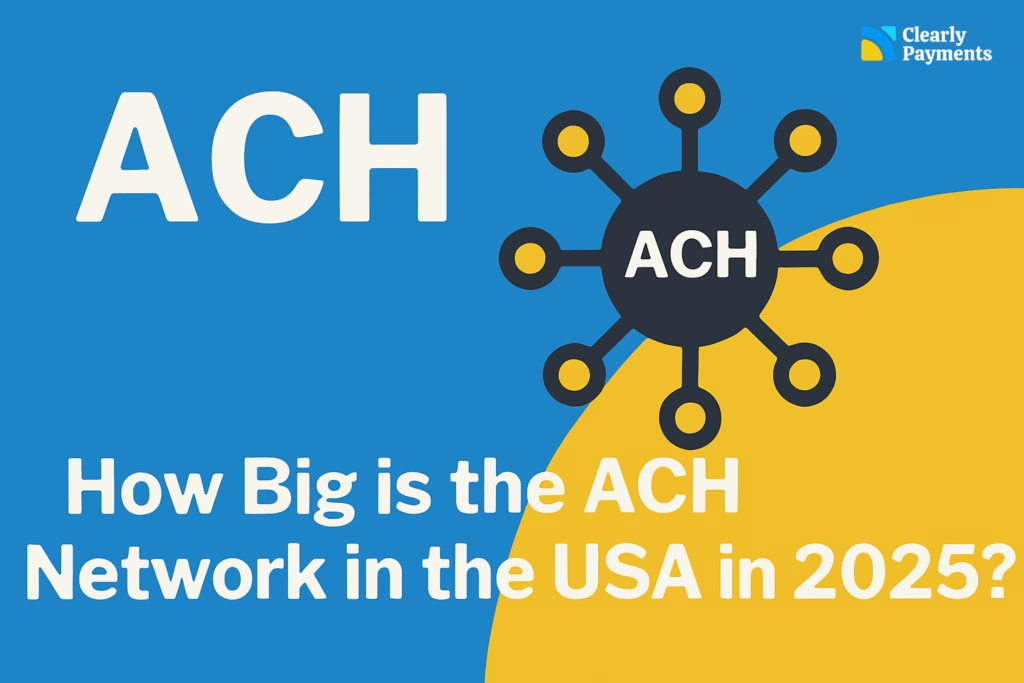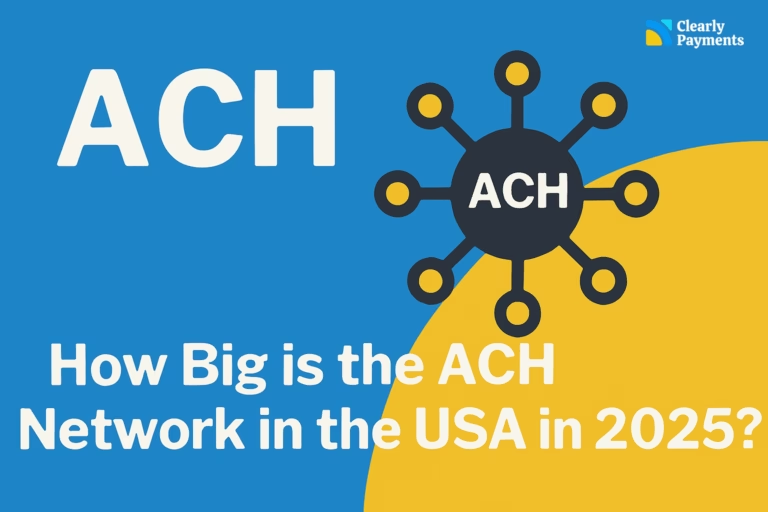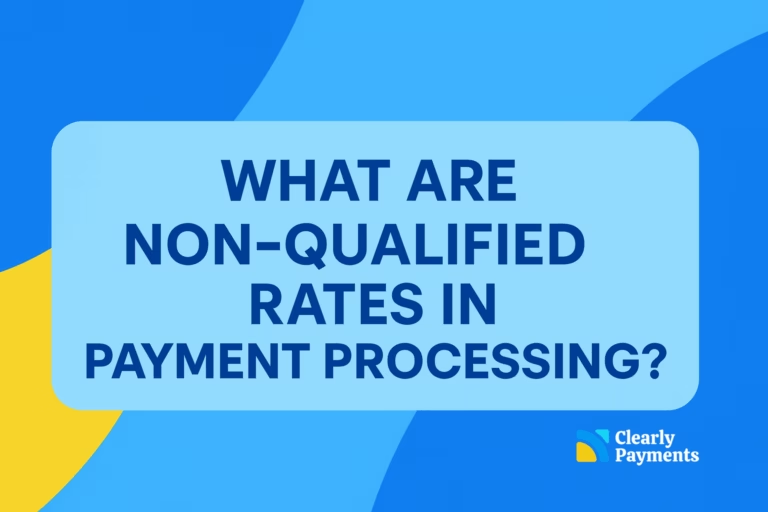The U.S. ACH Network has become one of the largest and most reliable electronic payment systems in the world. While credit cards tend to dominate public conversation, ACH is the underlying engine that powers payroll, bill payments, rent, insurance, B2B invoices, government benefits, and an enormous portion of business-to-consumer transfers. In 2025, the ACH Network is bigger than ever, both in volume and total value moved, and remains a critical part of the U.S. payments ecosystem.
This article provides statistics on how large the ACH Network is in 2025, using the most recent figures from analysts and financial institutions.
Total ACH Network Volume and Value in 2025
The ACH Network has grown consistently for more than a decade, but the latest numbers show exceptional scale. The network is now processing tens of billions of payments annually and moving amounts of money unmatched by any other U.S. payment rail.
Key 2025 and recent full-year totals include:
- The ACH Network processed 33.6 billion payment transactions in 2024, up 4.8% year-over-year.
- Total value reached $86.2 trillion, marking the 12th straight year the network increased by more than $1 trillion.
- When including “on-us” payments (bank-to-bank internal ACH), total U.S. ACH volume rises to 40.2 billion payments.
- In Q1 2025 alone, ACH volume reached 8.5 billion payments worth $22.1 trillion, a 6.6% increase in total value from Q1 2024.
- By Q3 2025, quarterly ACH value climbed to $23.2 trillion, continuing the upward trajectory.
These figures reaffirm that ACH is not only massive but still growing at a meaningful pace, particularly in high-value transactions that move through the U.S. financial system every day.
Same Day ACH: The Fastest-Growing Segment
Faster payments continue to reshape customer expectations, and Same Day ACH is now one of the strongest growth engines in the network. What was once a small add-on has become a meaningful share of U.S. funds movement.
In 2024, Same Day ACH crossed several important milestones and continues accelerating in 2025.
Recent Same Day ACH growth highlights:
- 1.2 billion payment transactions were processed through Same Day ACH in 2024, a 45% increase over 2023.
- Annual Same Day value reached $3.2 trillion in 2024, doubling within two years.
- In Q2 2025, Same Day ACH volume grew another 15% to 336 million payments.
- Value moved through Same Day in Q2 2025 hit $980 billion.
- The first half of 2025 generated 662 million Same Day ACH payments worth nearly $1.9 trillion.
Faster settlement times mean businesses can reconcile payments sooner, improve cash flow, and reduce short-term credit exposure, a major reason processors and software platforms increasingly rely on Same Day rails.
B2B Payments: The Largest Growth Category
One of the most important ACH stories is the shift from paper checks to digital B2B payments. U.S. businesses now use ACH more than ever to pay vendors, salaries, contractors, and recurring invoices. The ACH Network has quietly become the backbone of business payments.
A few important data points illustrate this trend:
- ACH handled 7.3 billion B2B payment transactions in 2024, an 11.6% increase over the prior year.
- This category has grown faster than consumer ACH for three consecutive years.
- Industry research shows paper check usage in B2B payments has fallen from 81% in 2004 to roughly 26% in 2024.
- Many AP and AR software platforms (ERP systems, accounting software, payout tools) are shifting default payment rails from checks to ACH.
For many SaaS platforms, marketplaces, and processors, B2B bill pay and vendor payouts are among the most attractive and scalable ACH use cases.
Consumer Payments: Payroll, Bills, Rent, etc
Consumers rely on ACH more than they realize. Most recurring personal finance routines, such as getting paid or paying bills, are powered by ACH behind the scenes. Although many consumers interact with ACH passively, they contribute to some of the network’s largest volume categories.
Recent data shows:
- Roughly 16.4 billion consumer-initiated ACH payments were processed in 2024.
- Payroll direct deposit remains the single largest consumer use case, accounting for billions of transfers each year.
- Bill payments, utilities, rent, loan payments, insurance, and subscription billing continue moving from checks and cards to ACH.
- Financial institutions report millions of weekly incoming/outgoing ACH flows from fintech apps, neobanks, and digital wallets.
For recurring billing businesses, subscription services, and high-volume consumer platforms, ACH offers lower costs and fewer disputes compared to card payments.
Why ACH Keeps Growing
Several structural forces continue pushing ACH forward even as new real-time payment systems emerge. ACH’s broad reach, low cost, and universal support across all U.S. banks help it maintain its scale.
The biggest drivers of growth include:
- Digital transformation in B2B payments: companies are abandoning checks at a rapidly
- Shift to subscription-based business models, all of which rely on recurring ACH billing
- The expansion of the gig-economy and payout platforms, which move funds via ACH
- Improved risk tools and fraud monitoring, making ACH easier to integrate with
- Demand for faster payments, with Same Day ACH filling the gap between traditional ACH and instant rails.
ACH is evolving, not being replaced, and its overall volume and value reflect that reality.
What This Means for Merchants
ACH’s scale in 2025 matters to merchants and SaaS platforms because it defines how money actually moves in the real economy. From marketplace payouts to enterprise AP flows, ACH is the system that handles the majority of high-value, recurring, and operational payments in the United States.
For organizations, ACH provides:
- Lower transaction costs compared to card networks
- Strong predictability for recurring payments
- High acceptance across every U.S. financial institution
- Options for faster funding via Same Day
- Reduced chargeback risk and fewer disputes
- Support for high-ticket B2B payments
As ACH continues its expansion, the businesses that integrate it directly into their billing, invoicing, and payout workflows will gain the greatest operational benefits.




